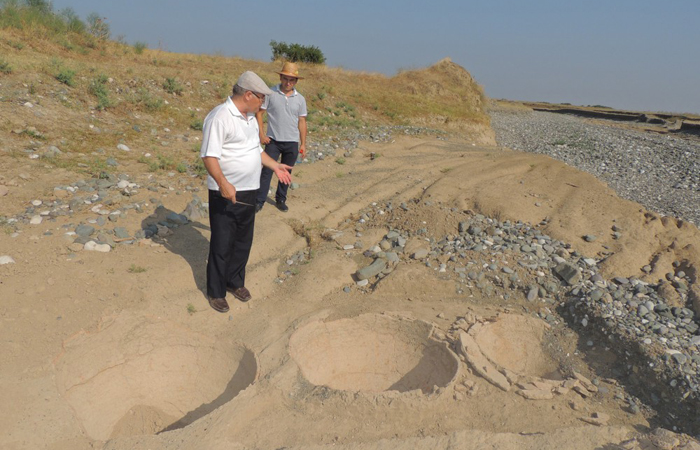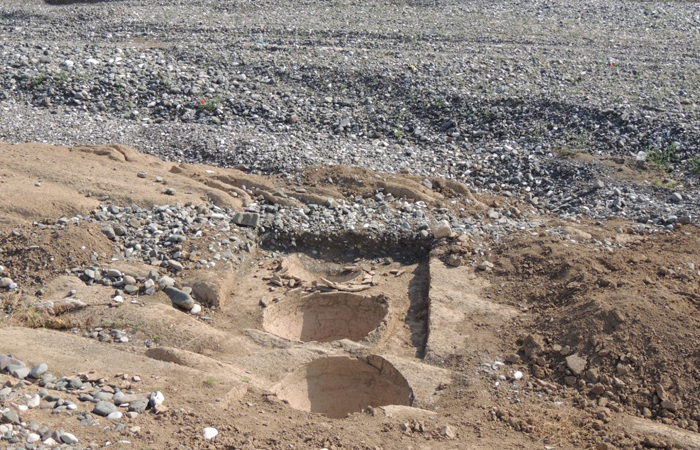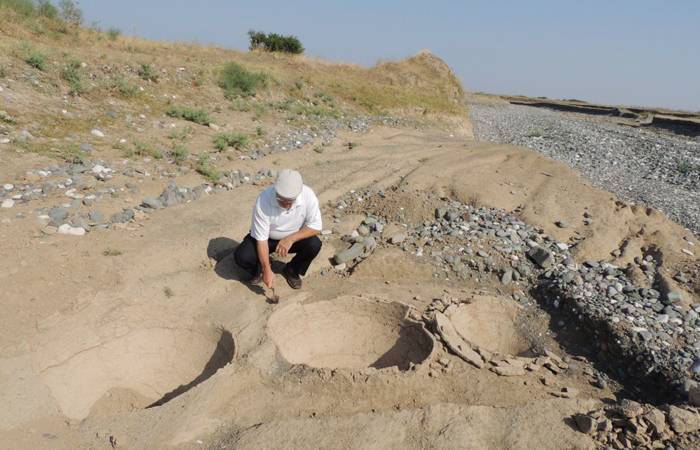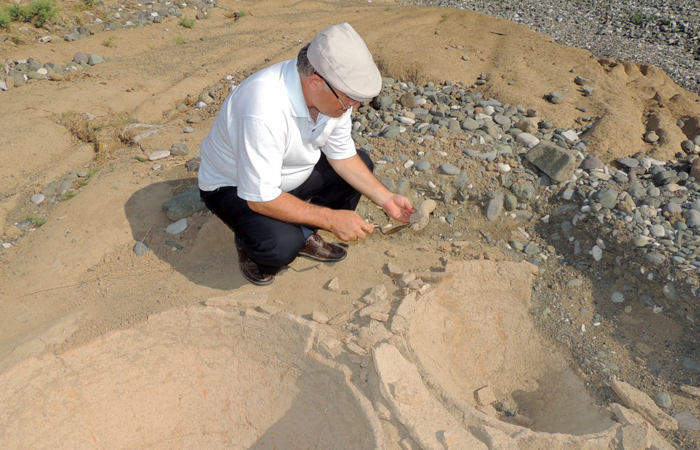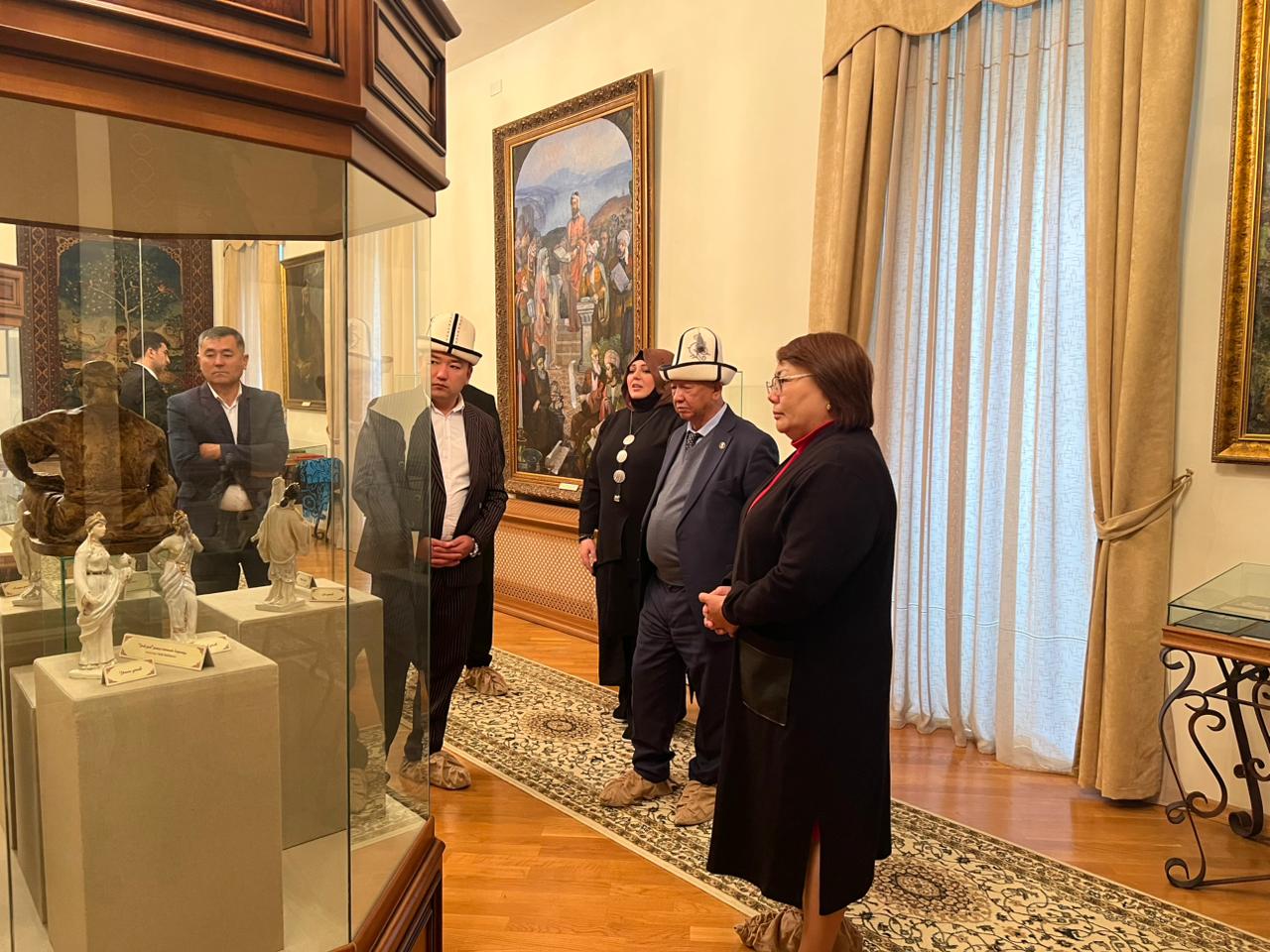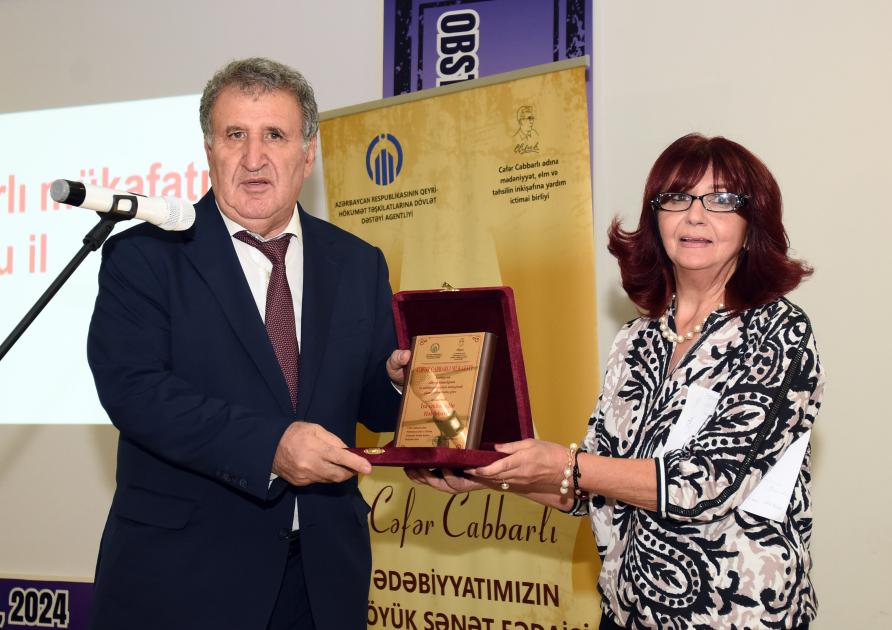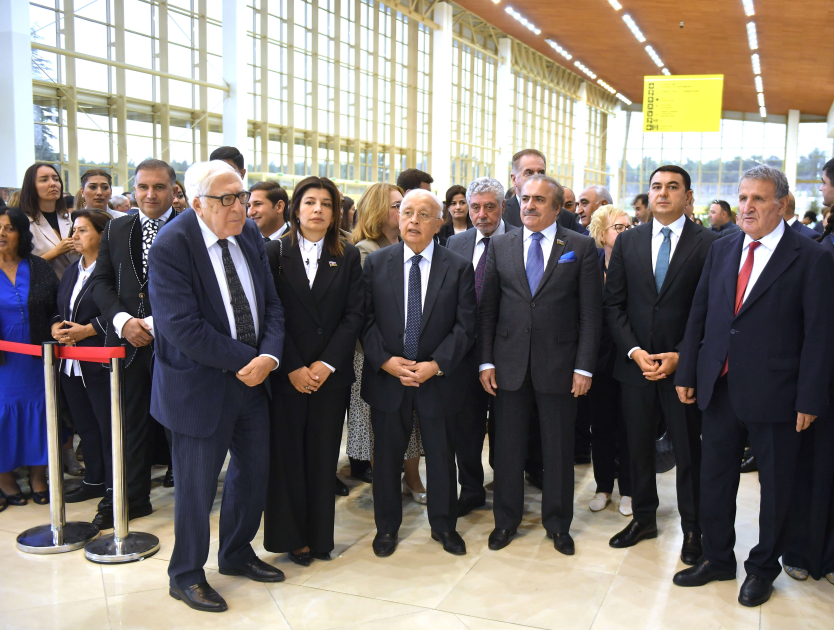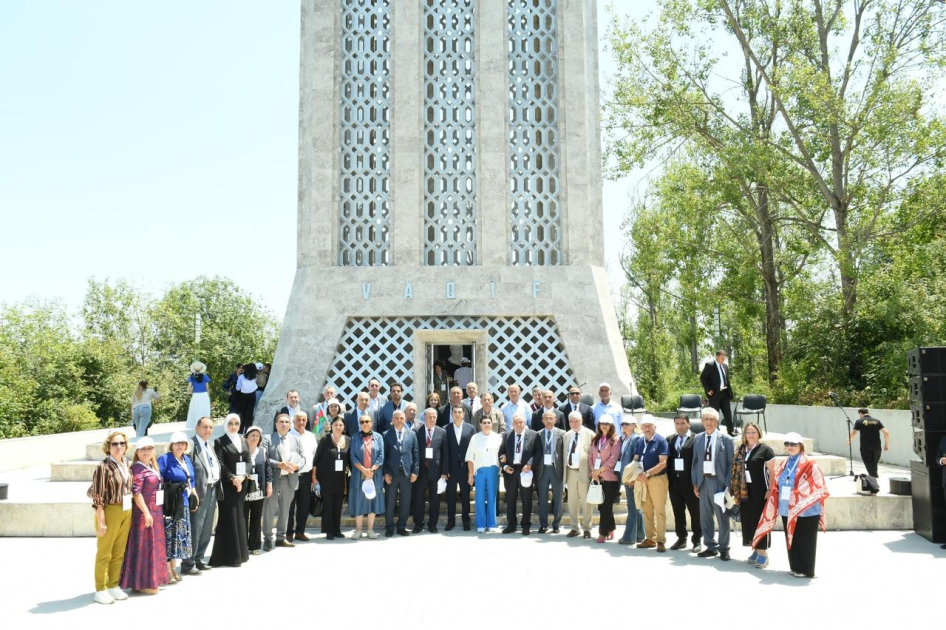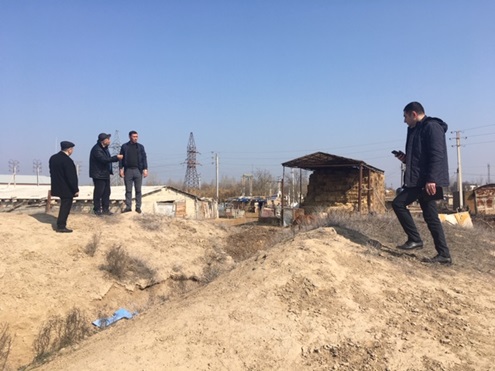- A-
- A
- A+
Discovered pitchers dated back to the VIII-VII centuries BC in the riverbed Gargarchay
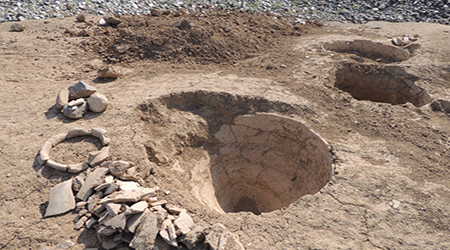
Discovered pitchers dated back to the VIII-VII centuries BC in the riverbed Gargarchay – in the vicinity Minekhorlu village, Agjabedi.
Material patterns have been found by habitants of the village, who were engaged in farm work near the river. They informed about village executive representation and Agjabedi region Culture and Tourism Department. Then, specialists of ANAS Institute of Archeology and Ethnography, conducting research in the area, were informed as well.
Leading fellow of the Institute of Archeology and Ethnography, head of expedition Mil-Karabakh group of Galatapa - Tavakkul Aliyev said that, the pitchers are located 100-120 meters apart from each other, in two groups. There are three pitchers lined up side by side along an axis in an each group. Here, also attracts attention a fire place with large river stones on the edge. Cleaning the inside of the fire place was found yellow clay soil, coal remnants, fragments of pottery and bone fragments.
Four of pitchers have been fully cleaned. The pitchers of different sizes made by the corrupted method, buried up in the ground, and plastered with mud along the edges. The upper part of them were destroyed, some of their wide embroidered edges have spilled into. The pitchers are of 0.8 meters in height. Diameters in the body are 0,9-1,1 meters. A pottery with horizontal rod-shaped handle has been found only in one of body part of pitcher. In general, large thin-walled, black glossy, and patterned crockery jug fragments, which are typical for final phase of the Early Iron Age - VIII-VII centuries BC, were found in around and inside of soil-filled pitchers.
"Initial investigations show that, opened pitchers in the riverbed Gargarchay, which belong to the same era, are a warehouse part, where had stored liquid (water or wine). Apparently, changing its direction through the warehouse Gargarchay made it a part of his bed. The warehouse could be linked with settlement Gurdlutapa, located on the left bank of Gargarchay, and rich of surface materials of the mentioned period. The study of these monuments dated back to the Azerbaijan history, which studied relatively weak, could give new results", - archeologist said.
Tavakkul Aliyev noted that, Gargarchay basin is full of archaeological monuments, reflecting different periods of Azerbaijan history. Still, at the end of the XIX century, these monuments attracted the attention of researchers. The burial mounds, stone box-type tombs dated back to the Bronze Age and Early Iron Age, ancient and medieval necropolies are often came across in both upland and lowland banks of the river in the territory of Nagorno-Karabakh. Institute of Archeology and Ethnography, expedition Mil-Karabakh, group of Galatapa has already been carrying out excavations in ancient Albanian town and adjacent tomb necropolis on the right bank of the river about ten years. The group also carries out exploration work in the surrounding areas, registers the new monuments found during farm work.
©All rights are reserved. Citing to www.science.gov.az is necessary upon using news.
Similar News
Links


 Elm TV
Elm TV
 Photo
Photo
 Video
Video
